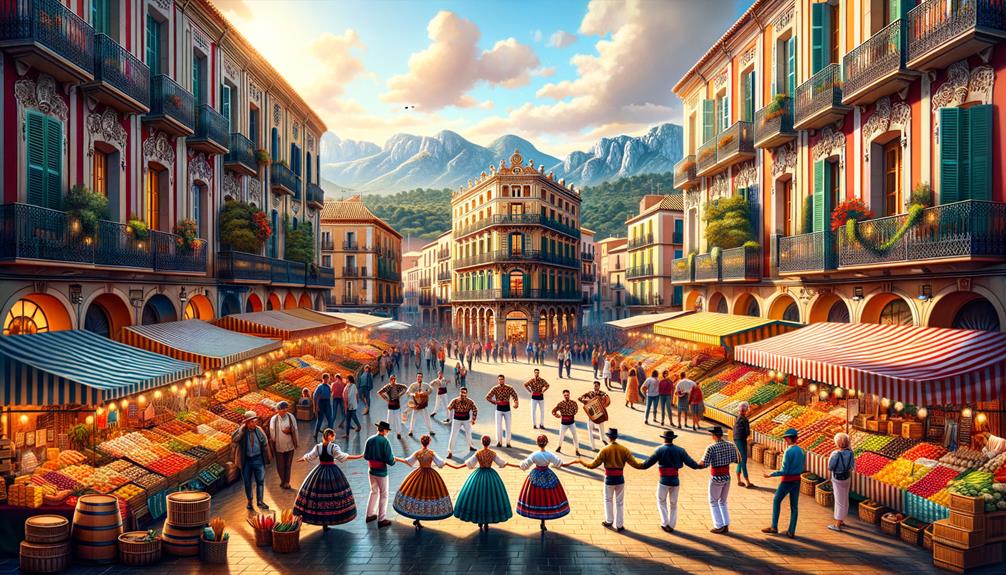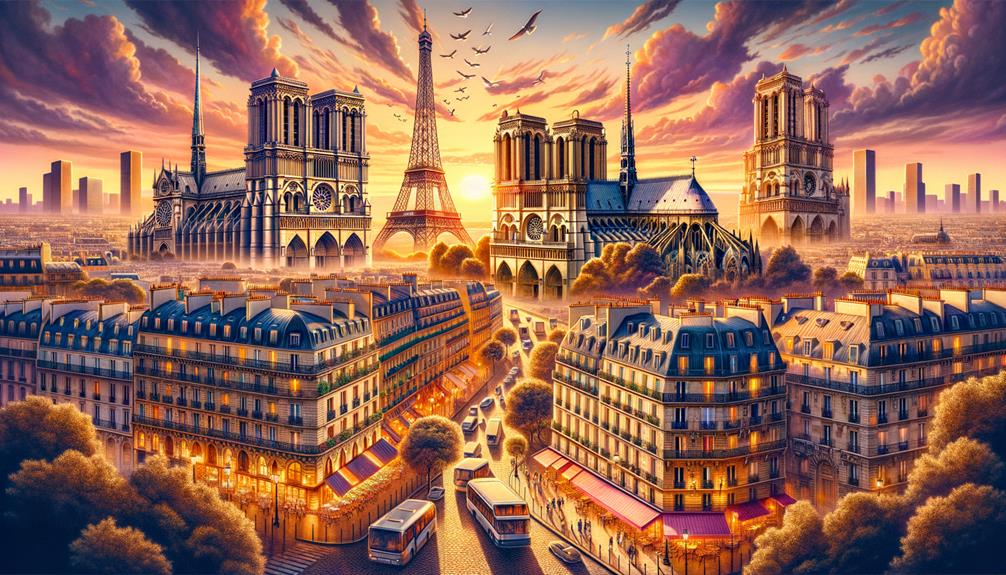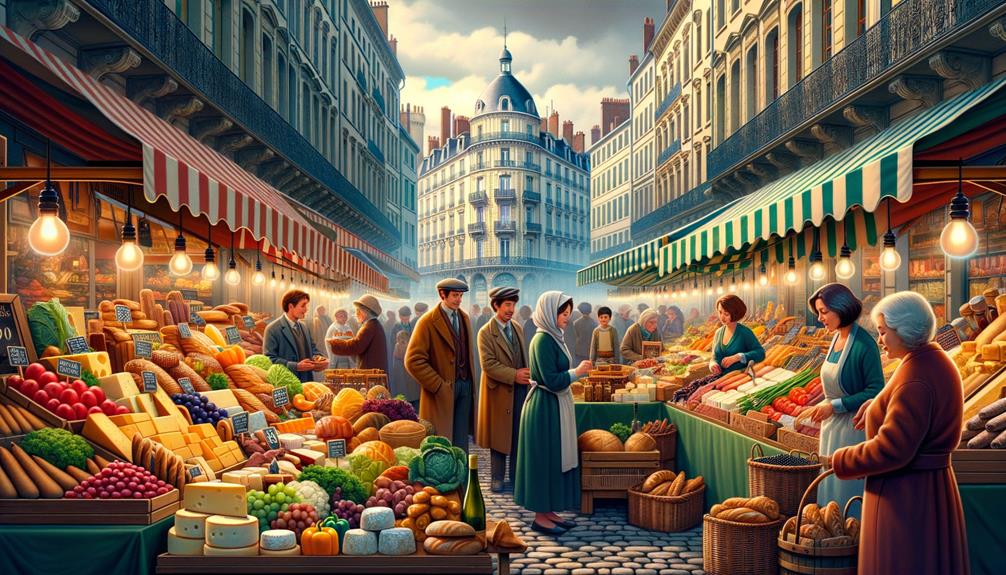Strolling through Perpignan, I couldn't help but notice the blend of Catalan influences around me. Bilingual street signs pointed the way, while the vivid reds and yellows of the Catalan flag added a splash of color to the city's medieval streets. The aroma of traditional dishes like paella and Crema Catalana filled the air, piquing my interest in the local cuisine. Ornate balconies and cultural spots like Llibreria Catalana revealed a deep-rooted identity that's both historical and very much alive. I found myself curious about what other hidden aspects of Catalan culture might be waiting to be uncovered.
Catalan Influence in Perpignan
As I wander through Perpignan, the Catalan influence is impossible to miss. From the bilingual street signs to the traditional architecture, the city's connection to its Catalan roots is evident everywhere. Signs in both French and Catalan line the streets, reflecting a rich cultural heritage. The Catalan language isn't just on plaques; it's an integral part of daily life here.
The architectural details in Perpignan are strikingly similar to what you'd find in Catalonia. Ornate balconies, intricate ironwork, and colorful tiles tell the story of shared history and cultural exchange. Even the buses feature Catalan script, underscoring the city's commitment to its unique identity.
However, it's hard to ignore the bittersweet reality that the Catalan language faces challenges in some areas. While government buildings and public signs proudly display it, its use in private businesses is dwindling. This quiet struggle hints at a generational gap, reminding us of the delicate balance between preserving cultural identity and adapting to modern times. Here, the essence of freedom feels closely tied to the resilience of language and tradition.
Daily Life and Language

Strolling through Perpignan, I can't help but notice the bright Catalan signage on street signs and government buildings. However, daily conversations often switch between French and Spanish. It's interesting to see a generational divide, with older folks more likely to speak Catalan than the younger crowd. Public spaces celebrate the language, but private businesses and everyday interactions don't always follow suit.
Catalan Language Presence
In Perpignan, the Catalan language is both prominent and rare. It's visible on public signs and government buildings but seldom heard in daily chatter. Walking around, you see the vibrant Catalan flag flying next to the French tricolor, highlighting the region's dual identity. Street signs and bus designs celebrate 'Catalan pride,' yet when you step into local shops or cafés, French is the dominant language.
This intriguing contrast is evident:
- Public Spaces: Catalan appears everywhere—from street signs to municipal buildings.
- Private Enterprises: French takes over, making Catalan less common in everyday interactions.
- Cultural Hubs: Catalan literature thrives in places like Llibreria Catalana.
Perpignan offers a rich cultural mix. The visible presence of Catalan in public areas seems like an invitation to embrace a dual heritage, yet the lack of spoken Catalan in daily life creates a paradox. Even at a traditional Catalan restaurant, my attempts to speak Catalan are met with polite French responses, highlighting the language's struggle to maintain its place in daily life.
Perpignan's streets tell one story, but its conversations tell another. This duality makes me think about the challenges of preserving cultural identity in a rapidly changing world.
Generational Language Gap
The generational language gap in Perpignan is quite noticeable. Older folks seem to stick to Catalan, while younger people mostly chat in French. As I walked through the busy streets, I heard elderly men and women exchanging greetings and stories in Catalan. In contrast, French was the go-to language among the younger crowd.
When I tried ordering coffee in Catalan at a local café, I got polite smiles and responses in French. It's tough to find spoken Catalan outside family gatherings or cultural events, which shows the challenge of keeping the language alive among the youth.
This difference in language use mirrors Perpignan's changing cultural scene. The older generation, with their strong ties to Catalan, watch as their language fades, replaced by French in daily life. It's a mix of pride and concern. The younger generation's preference for French reflects broader societal shifts, but it also raises worries about the future of Catalan. Thinking about this, Perpignan's linguistic landscape feels both vibrant and fragile.
Public and Private Use
Perpignan's public spaces proudly highlight Catalan language and culture, yet daily interactions in private settings often default to French, revealing a complex blend of linguistic identity. Walking through the city, I notice Catalan on street signs, bus designs, and government buildings, vividly affirming its presence. However, when I step into a café or small shop and attempt to use Catalan, I often end up switching back to French. The native language seems to fade into the background in these intimate exchanges.
This duality is particularly noticeable in traditional Catalan restaurants where menus are in Catalan, but conversations with staff are mostly in French. Occasionally, Spanish serves as a bridge, further illustrating the linguistic layers of Perpignan. The generational gap is evident; older residents may speak Catalan fluently, while younger generations lean towards French.
Despite these challenges, the Llibreria Catalana bookstore remains a spot for those keen to immerse themselves in the native language and culture. It's a reminder that the spirit of Catalonia persists, even if it's often hidden from immediate view.
- Street signs and bus designs: Catalan's public visibility.
- Cafés and shops: French prevails in private interactions.
- Llibreria Catalana: A cultural and linguistic haven.
Dining and Catalan Cuisine
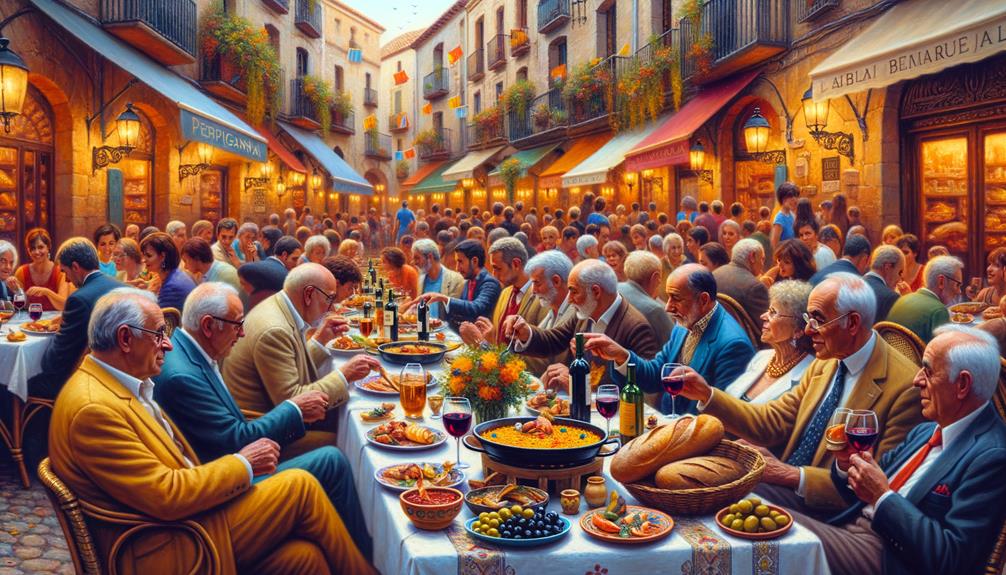
Walking through Perpignan, I couldn't resist the enticing scents of paella and tapas drifting from every corner. The menus were a bit challenging to navigate at times, but the delicious food made every meal a memorable experience. From the savory botifarra to the fresh anchovies from Collioure, each dish shared a piece of the region's rich culinary tradition.
Traditional Catalan Dishes
Discovering traditional Catalan dishes introduces you to a delightful mix of flavors. From the creamy sweetness of Crema Catalana to the hearty warmth of Escudella i Carn d'Olla, each dish offers a glimpse into Catalonia's rich culture and history. Crema Catalana, often likened to crème brûlée, enchants with its blend of cinnamon and citrus, making it a dessert that's both comforting and refreshing.
Escudella i Carn d'Olla is a robust stew filled with meat, vegetables, and pasta—a true comfort food, especially loved during winter celebrations. The layers of flavors in this dish make it a staple in many Catalan homes.
Another favorite is Fideuà, a seafood dish similar to paella but made with short noodles. Its rich, coastal flavors transport you straight to the shores of Catalonia with every bite.
- Crema Catalana: A creamy dessert with cinnamon and citrus notes.
- Escudella i Carn d'Olla: A hearty stew perfect for winter.
- Fideuà: A noodle-based seafood dish.
Reflecting on these dishes, one can't help but appreciate Catalonia's culinary diversity. Each bite feels like a celebration of life and culture.
Language Barriers Experienced
As I enjoyed the rich flavors of Catalan cuisine, I quickly realized that dealing with language barriers added a unique twist to dining in Perpignan. At a traditional Catalan restaurant, the menus were entirely in Catalan. Trying to figure out the unfamiliar words, it became clear that communicating with the staff would be tricky. Even though I was eager to practice Catalan, most of our conversations ended up in French, showing how common language barriers are in the region.
When Catalan wasn't understood, we switched to Spanish, creating a mix of three languages that was both interesting and a bit confusing. Each interaction with the staff felt like a little adventure, as I juggled between languages to ensure I ordered correctly. This constant shifting highlighted Perpignan's cultural richness and diversity but also the practical challenges of language barriers.
Looking back, I realized that these moments of linguistic struggle were more than just about ordering food; they were about connecting with a culture that takes great pride in its heritage. Despite the difficulties, there was a sense of discovery and excitement in facing the unknown, making each meal a memorable experience.
Authentic Catalan Restaurants
Strolling through the picturesque streets of Perpignan, you'll stumble upon Catalan restaurants that offer a deep dive into the region's culinary traditions. As you wander through Perpignan Centre, you'll find spots that serve the heart and soul of Catalan cuisine. Their menus are filled with classic dishes like escalivada, botifarra, and the ever-popular paella. Each bite takes you on a journey through the vibrant flavors and distinct ingredients that make Catalonia special.
Dining at these places isn't just about filling your stomach; it's a cultural experience. Fresh seafood, local wines, and seasonal produce showcase the richness of Catalan cooking. I once enjoyed a dish with romesco sauce that perfectly balanced smokiness and tang. And for dessert, a creamy, caramelized crema catalana added the perfect touch of sweetness to the meal.
Here are a few must-try dishes:
- Esqueixada – A refreshing salted cod salad that's light and full of flavor.
- Botifarra – Traditional Catalan sausage, often served with white beans.
- Crema Catalana – A dessert similar to crème brûlée but with a citrus twist.
In Perpignan Centre, these authentic restaurants don't just satisfy your hunger; they offer a taste of Catalan culture that nourishes the soul.
Catalan Bookstores
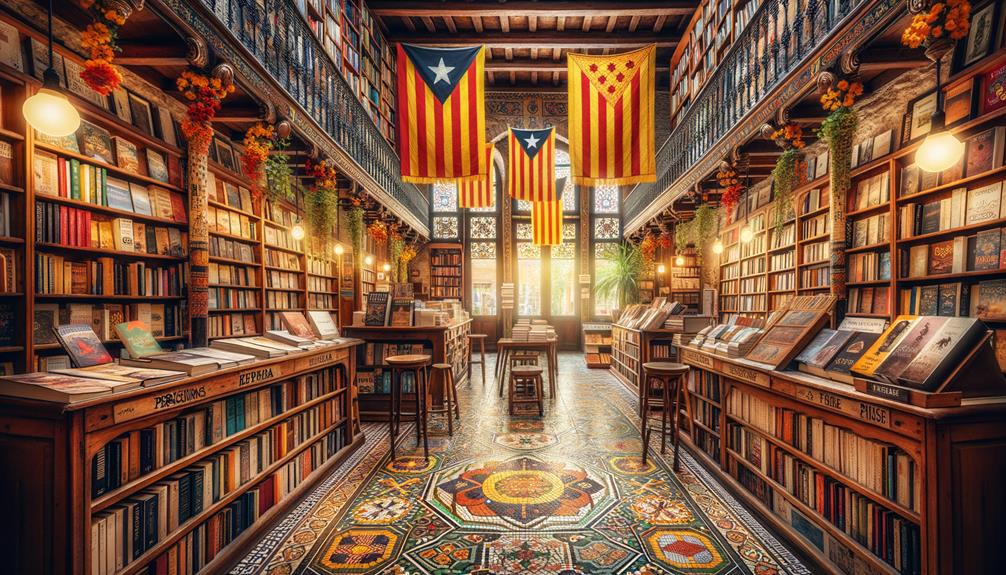
Right in the center of Perpignan, Llibreria Catalana is a gem for anyone interested in Catalan literature and culture. This bookstore offers a wide range of books mainly in Catalan, making it a great spot for both locals and visitors who want to dive into the region's literary heritage.
As I walked through the aisles, I was struck by the variety of topics and genres available. From novels and poetry to history and cookbooks, there's something for everyone. A particularly delightful section is dedicated to children's books, creating a cozy corner where young readers can enjoy Catalan stories.
Llibreria Catalana promotes Catalan language and culture through its carefully selected collection, offering a valuable resource for anyone looking to learn more about the region. Each book on the shelves shares a piece of the Catalan story, making the bookstore more than just a place to buy books—it's a cultural experience.
Reflecting on my visit, I left with a deeper appreciation for Catalan culture. Llibreria Catalana isn't just a bookstore; it's a window into the vibrant heart of Perpignan.
Community and Cultural Exchange
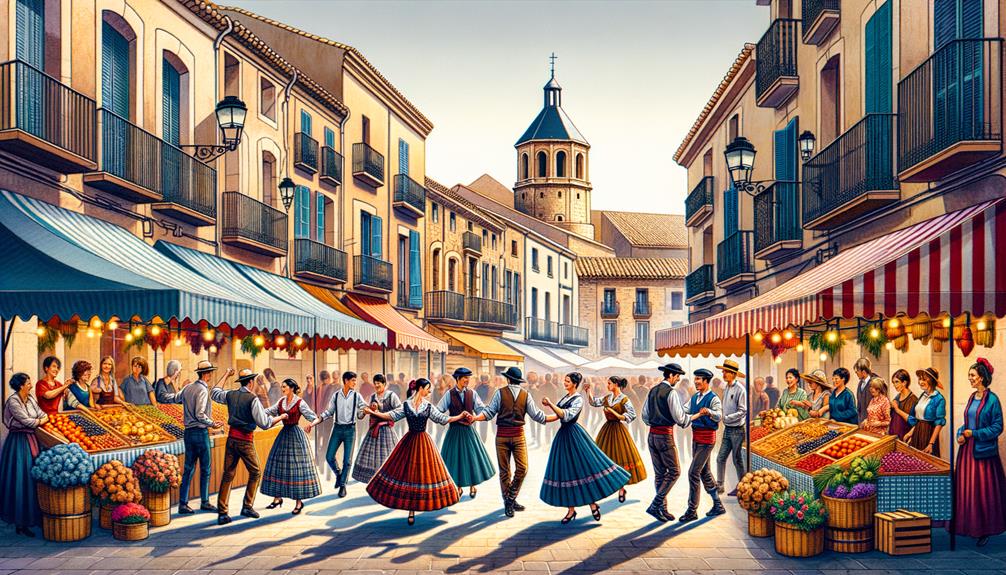
Connecting with the local Catalan community in Perpignan is a rewarding way to appreciate their rich traditions and language. I found myself drawn into this cultural exchange by simply starting conversations with local Catalan speakers. Each chat opened a door to their world, uncovering layers of history and pride.
At El Casal, a center for Catalan culture, I joined book clubs and language classes. These gatherings were about more than just learning; they were about experiencing the culture firsthand. The community's commitment to preserving their heritage was evident, especially when we talked about the Palais des Rois de Majorque, a symbol of their historical legacy.
Here are some highlights from my cultural journey:
- Language Exchange: Talking with locals helped me understand the subtleties of the Catalan language.
- Cultural Activities: Joining book clubs and classes at El Casal immersed me in local traditions.
- Community Events: Seeing the efforts to preserve and promote Catalan heritage was truly inspiring.
These experiences showed me that learning Catalan is not just about the language; it's a way to build deeper cultural connections and respect a rich history.
Perpignan Overview

Walking through Perpignan, I was immediately struck by the city's lively Catalan spirit and rich history. Situated in the South of France, this lesser-known destination offers an authentic vibe, away from the crowded tourist spots. The old town center, with its medieval streets, invites you to wander and discover. As I walked, I found excellent shopping opportunities and affordable dining spots serving genuine Catalan dishes.
The architectural highlights, like the imposing Castillet tower and the grand Palais des Rois de Majorque, stand as testaments to Perpignan's storied past. Each corner seemed to share tales from history, yet the city's vibrant energy felt refreshingly modern.
Catalan culture is alive here, with language schools filled with eager students and local artists like Aristide Maillol contributing to the city's cultural richness. Events like the Visa Pour l'Image International Festival further showcase Perpignan's active cultural life.
Coming from the United States, I found Perpignan's mix of history and modern life captivating. The influence of Catalan cuisine and local wines added a delicious dimension to my experience, making each meal a journey of flavors. This city is a hidden gem, waiting for more people to appreciate its charm.
Cultural and Architectural Highlights
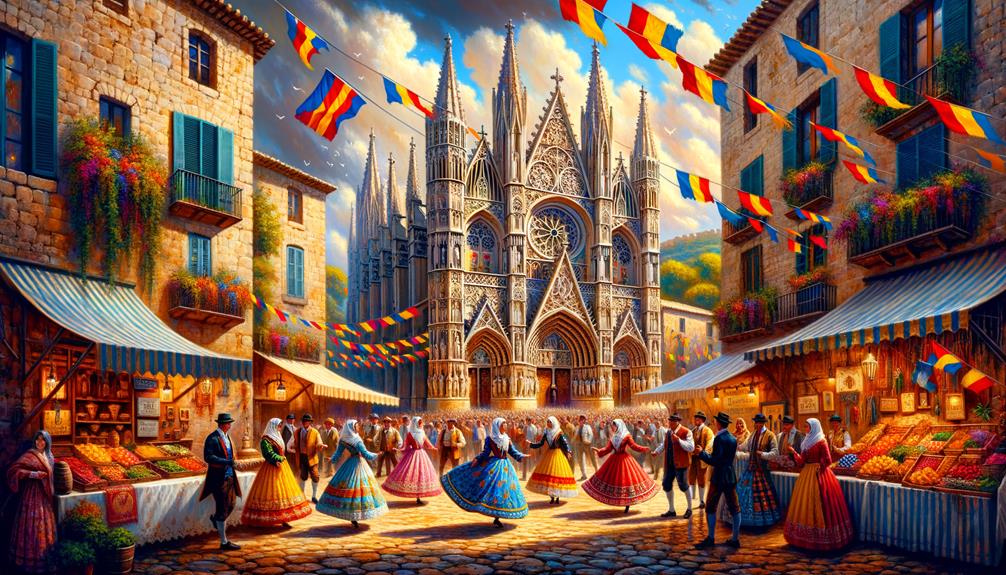
One of the first things you'll notice in Perpignan is the impressive blend of cultural and architectural landmarks, each telling a unique story of the city's rich heritage. As you walk through the city, the majestic Palais des Rois de Majorque stands out. This stunning fortress, once home to the Kings of Majorca, showcases Perpignan's historical significance and Catalan influence.
As you continue exploring, the Castillet defense tower catches your eye. This iconic red-brick structure, which once served as a gatehouse and prison, now symbolizes the city's resilience and architectural skill. The tower is a fascinating spot, offering panoramic views of Perpignan from its terrace.
Venturing deeper into the old town, you'll find yourself wandering through a maze of medieval streets. Each corner seems to whisper stories from the past, with narrow alleys and lively local markets bursting with activity. The street art and sculptures by local artist Aristide Maillol add a modern touch to this historical setting.
- Palais des Rois de Majorque
- Castillet defense tower
- Medieval streets of the old town
Perpignan's cultural and architectural highlights truly capture the essence of its rich and diverse heritage.
Events and Gastronomy
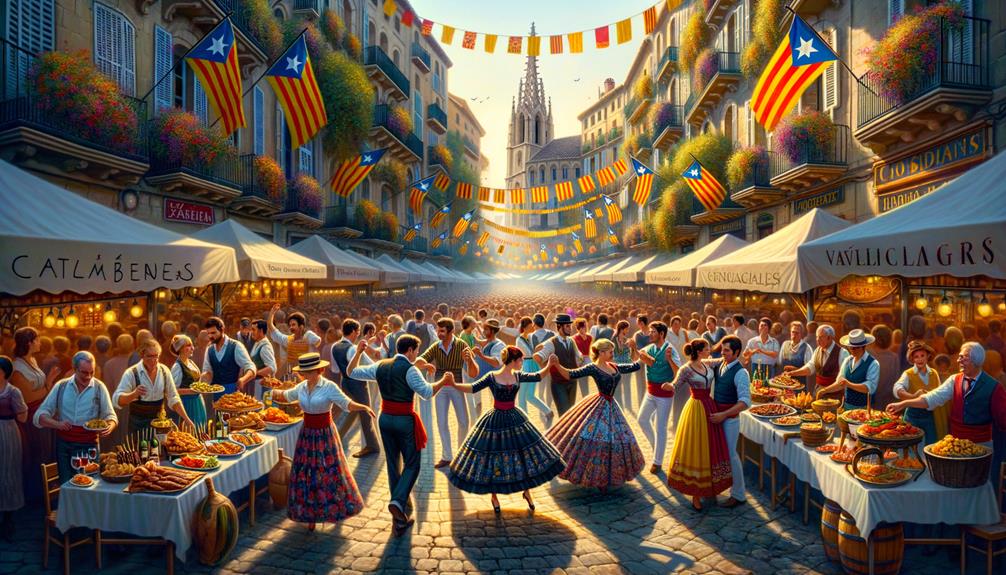
In Perpignan, the lively mix of events and food invites you to dive into the city's bustling cultural scene and delicious culinary traditions. The city comes alive during the Visa Pour l'Image International Festival, where photographers from all over the world present their work against Perpignan's historic backdrop. Les Jeudis de Perpignan transforms summer Thursdays into vibrant evenings filled with music, dance, and street performances, while the Perpignan Guitar Festival echoes with the sounds of talented musicians.
The food here is a real treat. Catalan cuisine flavors every dish, from the spicy sausages to the fresh seafood. I strolled through the Casanyes Market, a lively spot full of fresh produce, seafood, and local specialties. The bright colors and tempting smells of anchovies from Collioure and local Côtes du Roussillon wines drew me in to try everything.
Thinking back on my experiences, I realized that Perpignan's rich history and cultural events provide a unique setting for its food scene. Each bite and sip tells a story, blending the flavors of tradition with the spirit of celebration. Here, freedom tastes like the perfect mix of Catalan spices and French wines.
Natural Beauty and Traditions
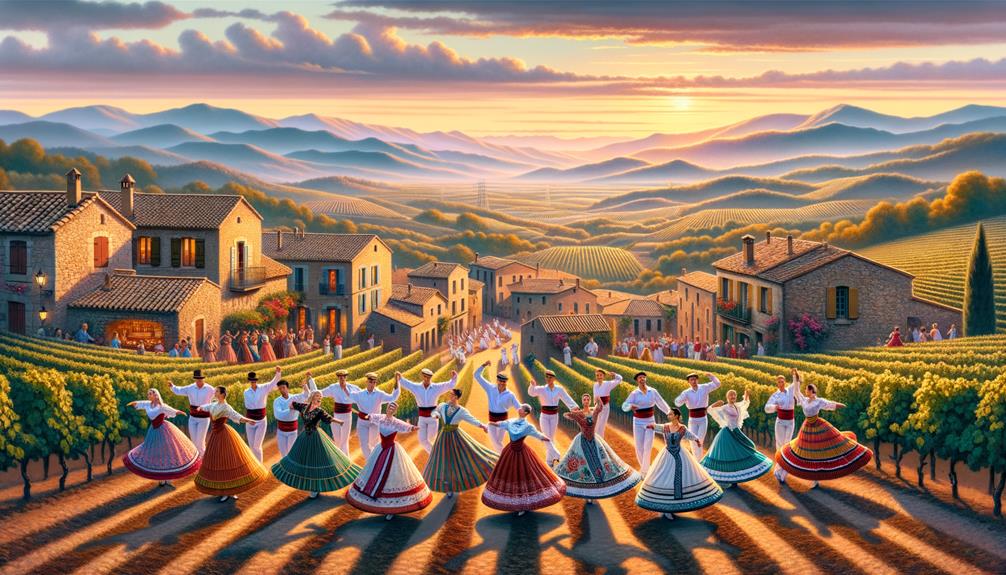
Nestled amidst vibrant festivals and mouthwatering cuisine, Perpignan's stunning natural beauty and rich traditions truly define this Catalan city. Surrounded by the impressive Canigou Massif, the peaceful Têt Valley, the charming Vermeille Coast, and the calm Etang de Canet-Saint-Nazaire, Perpignan is a paradise for nature lovers. With around 250 sunny days each year, its warm Mediterranean climate makes it an ideal getaway.
As I explore this beautiful region, I'm captivated by the local traditions that thrive in Perpignan. From the lively Sardane dance to the soulful melodies of Cobla bands, there's an infectious energy in the air. Festa Major celebrations bring the streets alive with color and joy, while the human towers, known as Castells, showcase incredible community spirit and strength.
- Sardane dance and Cobla bands
- Festa Major celebrations
- Human towers (Castells)
This blend of natural beauty and cultural richness offers a unique glimpse into Catalan heritage. Whether you're hiking a mountain, basking in the sun, or joining a traditional dance, Perpignan invites you to experience its pure and unfiltered charm.
Frequently Asked Questions
Why Is Perpignan Famous?
I once wandered through the lively streets of Perpignan, soaking in its rich Catalan culture. The historic Palais des Rois de Majorque, bustling markets, and mouthwatering fusion cuisine make Perpignan a standout destination, offering an unforgettable experience.
Do They Speak Catalan in Perpignan?
Yes, Catalan is spoken in Perpignan. You can see it on street signs, in bookstores, and hear it in conversations with locals. That said, French remains the dominant language, especially among younger people and in private businesses.
Does Catalan Have French Influence?
You might think Catalan has some French influence, but that's not really the case. From what I've experienced, Catalan stands strong on its own, keeping a rich and unique heritage. It's fiercely independent and incredibly vibrant—a true cultural gem.
What Is Catalonia, Spain Famous For?
Catalonia, Spain is famous for its rich culture, beautiful landscapes, and unique architecture. The region bursts with vibrant festivals, mouth-watering cuisine, and a strong sense of identity that you can feel everywhere.

